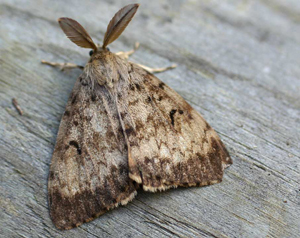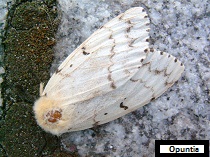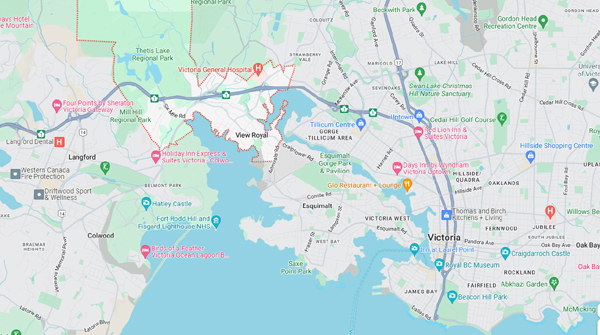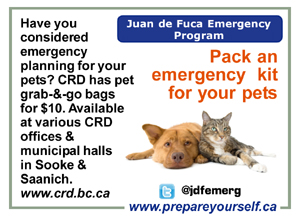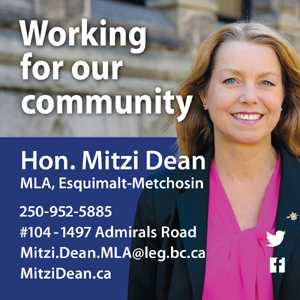Saturday January 13, 2024 | LANGFORD, BC [Updated 2:51 pm]
by Mary P Brooke | Island Social Trends
In spring 2024, aerial-spray treatments on Vancouver Island and Salt Spring Island in spring 2024 will be done to eradicate spongy moths and minimize the risk they pose to forests, farms, orchards and trees.
Spongy moths are defoliators, which means their caterpillars eat the leaves of trees and shrubs. The species was formerly known as gypsy moths.
The BC Ministry of Forests operation will be done under the direction of the BC Plant Protection Advisory Council’s Spongy Moth Technical Advisory Committee, the ministry plans to safely treat the following areas in the Vancouver Island and Southern Gulf Islands region:
- North Saanich: 170 hectares
- Greater Victoria/View Royal area: (Gorge-Tillicum: 120 hectares; Esquimalt: 31 hectares; and Belmont: 430 hectares)
- Cowichan Bay: 126 hectares
- Nanaimo: 130 hectares
- Qualicum Beach: 96 hectares
- Salt Spring Island: 48 hectares
In previous years similar spraying has been done in late May to early June in the Greater Victoria area.
Protecting urban forests and farms:
Invasive spongy moths (also known as Lymantria moths and formerly known as gypsy moths) pose a risk to B.C.’s ecosystems and economy. Spongy moth caterpillars feed on tree leaves.
In recent years, they have defoliated sections of forests and residential areas in Ontario and the eastern United States.
Untreated spongy moths risk spreading to other areas of BC and are a threat to urban forests and farms.
Impacts on the insects in soil can reportedly take up to one month and impact other insect species.
Low doses of Btk, regardless of the strain, has reportedly led to significantly greater longevity in some types of wasps.
Biological insecticide:
The biological insecticide used for treatment is Foray 48B. It is used in organic farming, and the active ingredient, Bacillus thuringiensis var kurstaki (Btk), is naturally present in urban, agricultural and forest soils throughout the province.
It only affects the stomachs of moth and butterfly caterpillars, and is specific to their digestive systems. The Btk bacterium produces a protein crystal during the spore-forming stage of its life cycle which is toxic only to the larvae (caterpillars) of specific insect species which is converted into toxic protein molecules that destroy the walls of the insect’s stomach. The insect usually stops feeding within hours and dies within two to five days.
According to the Government of Canada the acidic stomachs of humans and animals do not activate Btk toxins.
But according to other sources, some individuals have reacted with irritation of the eyes and skin. Other subjects with hay fever (respiratory allergic response to plant inhalants) reported more significant effects, including throat irritation, upset stomach, and difficulty sleeping.
The treatment has been approved for the control of spongy moth larvae in Canada since 1961.
Noise impact:
In addition to the inhalant and skin irritation aspect of the spraying, there is a noise factor as airplanes deliver the spray over urban areas.
How the moths got here:
According to the BC Ministry of Forests, the European spongy moth (Lymantria dispar; formerly referred to as gypsy moth) was introduced from Europe to the northeastern U.S. in 1869. The North American strain of the moth was first seen in BC in 1978.
Treatment site info being received to February 21, 2024:
A person wanting to contribute information about the treatment sites for the evaluation of the permit applications must send copies of the information to both the applicant and administrator under the Integrated Pest Management Act by Feb. 21, 2024.
Applicant:
British Columbia Ministry of Forests
Suite 200, 10470-152nd St.
Surrey, B.C. V3R 0Y3
or by email: flnrgypsymothinfo@gov.bc.ca (mailto:flnrgypsymothinfo@gov.bc.ca)
and
Administrator:
Administrator under the Integrated Pest Management Act
Ministry of Environment and Climate Change Strategy
Suite 200, 10470-152 St.
Surrey, B.C. V3R 0Y3
or by email: ENVCIA@gov.bc.ca (mailto:ENVCIA@gov.bc.ca)
===== BC GOVERNMENT LINKS:
- To learn about spongy moths, call: 1 866 917-5999 toll-free.
- For information about the pesticide-use permit application or to see a map of planned treatment areas.
- Pesticide-use permit application and treatment area maps are also available for viewing at the city or municipal hall, and on the website of the affected community.
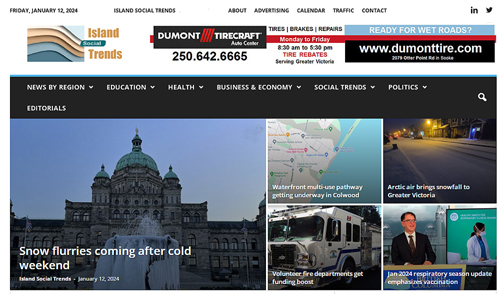
===== RELATED:
Aerial moth spraying in View Royal, Lake Cowichan, Nanaimo (May 16, 2022)
Aerial moth spraying in View Royal, Lake Cowichan, Nanaimo (April 30, 2022)


